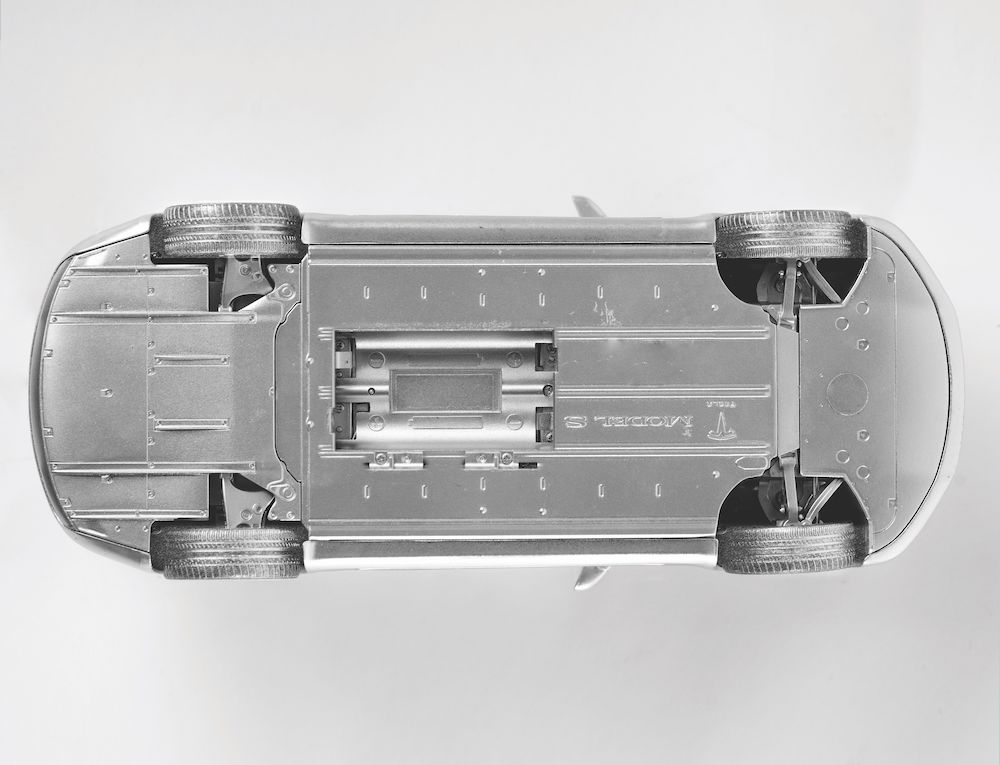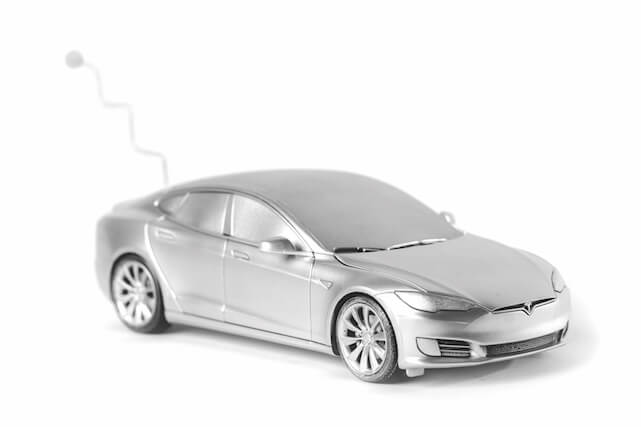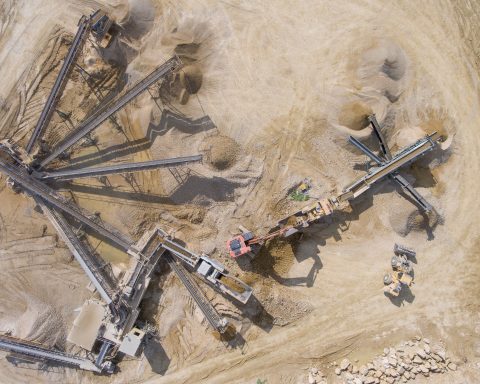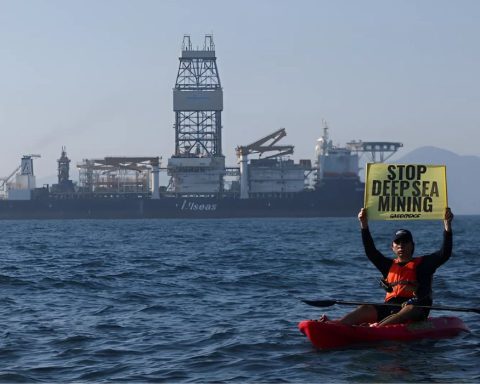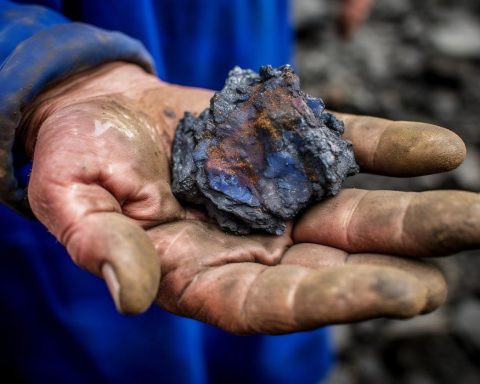Two thousand nineteen may go down as the year the auto industry started putting some muscle into electric vehicle sales. Amidst a steady stream of pledges to deliver more EVs than ever over the next five years, Ford filmed an electric prototype of its F-150 pickup truck (a favourite gas guzzler among Canadians) towing an entire freight train in a CN railyard in Montreal. Not to be outdone, the forthcoming Tesla Cybertruck then hauled the F-150 uphill in a tongue-in-cheek tug-of-war.
The brawny marketing stunts carried a simple message: electric cars aren’t just for tree-hugging Leaf, Prius and Bolt lovers anymore. The message is timely, with global leaders (including Prime Minister Justin Trudeau) committing to carbon pollution targets of “net zero” by 2050, tough new emissions standards coming out of Europe, and a smattering of governments following Norway’s early lead on banning gas-powered-car sales as soon as 2025. For the vast majority of automakers that have cautiously dipped their toes in the EV market, the race to net zero is officially on. But environmental and human rights advocates, along with international heavyweights at the World Bank and World Economic Forum, say there’s an elephant in the showroom. The EV revolution has been racking up a whole supply chain of trouble around the globe (including a recent lawsuit) related to an onslaught of often-contentious new mines opening to meet surging battery-metal demand, not to mention the coming tide of e-waste from old batteries.
If we want to fix this before e-cars take over the roads (30% of car sales should be electric across the EU and North America by 2030, analysts forecast), the time to ensure it’s done right is now. A handful of companies are trying to get out ahead of looming environmental and social risks. So who will be the first to develop a fully ethical battery, and can car companies ensure the EV revolution is green from end to end?
Lithium mines in Chile, Open Commons
The clean-energy mining boom
The transport sector is currently the fastest-growing contributor to the climate crisis, according to the World Resources Institute (with road, rail, air and marine transport accounting for 24% of global CO2 emissions in 2016). Electrified transport – powered by low-carbon grids – could help clear deadly air pollution and cut millions of tonnes of greenhouse gas emissions per year. In the shift from burning planet-cooking fossil fuels to generating and storing clean energy in batteries for our cars and, increasingly, our homes, one thing is certain: batteries are driving demand for more minerals in the low-carbon transition.
Bloomberg New Energy Finance predicts that by decade’s end the battery market will be worth $116 billion annually (not including investments in supply chains), up from $14.6 billion in 2017. Trailblazing EV manufacturer Tesla and others have warned that underinvestment in the mineral supply chain will lead to a shortage of nickel and other EV battery minerals down the road. In its 2017 report The Growing Role of Minerals and Metals for a Low Carbon Future, the World Bank forecasted that global demand for low-carbon-economy minerals such as lithium, graphite and nickel will skyrocket by 965%, 383% and 108% respectively by 2050. But two years later, as the World Bank noted that growing demand for minerals offers an “opportunity for mineral-rich developing countries to develop,” it cautioned that “significant challenges will likely emerge if the climate-driven clean energy transition is not managed responsibly and sustainably.”
But those challenges were already lurking.
Cobalt mining, Congo. Image courtesy of Amnesty International
The dark side of green minerals
Amnesty International first thrust the dark side of mining for car- and smartphone-battery minerals into the spotlight in 2016 with a damning investigation into the child labour-plagued cobalt mines of war-torn Congo (home to 60% of global cobalt reserves). Then in late 2019, the issue hit the front pages again when a landmark lawsuit was launched against Tesla and a handful of tech giants on behalf of 14 Congolese families who say their children were seriously injured or killed working in cobalt mines earlier in the year.
With cobalt dubbed the “blood diamond of batteries,” Tesla and others have been slashing their use of the controversial mineral and replacing it with nickel in a move that’s said to prolong range per change. Not that cutting and running from the Congo will help those mining in poverty, say activists, and without tough responsible mining standards in place, other EV minerals end up being called out for bad behaviour, too. The Washington Post recently reported that nickel mines in Indonesia are turning the oceans there red. The draining of water reserves for vast lithium mines in the salt plains of Latin America has been fingered for fuelling water wars, social unrest and mine strikes in Chile, Bolivia and Argentina. And a new frontier of destructive deep-sea mining for several green economy minerals has prompted the nation of Fiji, along with Greenpeace and others, to call for an immediate moratorium on the nascent practice.
At a MiningWatch conference in Ottawa in November, the human and environmental implications of this new extractive rush were front and centre. Representatives from Chile, Peru, Papua New Guinea, Congo and northern Canada took the stage one by one, concerned about the green transition being used as justification for running roughshod over their ecosystems and human rights. “The floor is dropping on standards in Peru,” said Ana Leyva Valera, executive director of CooperAcción, through a translator. With increased demand for green technology minerals, she said, “we have to make sure there are not more sacrifice zones.”
The International Institute for Sustainable Development (IISD) has studied what it calls “green conflict minerals” (cobalt, nickel, lithium, rare earths and aluminum). The problem with green economy minerals, says IISD analyst Clare Church, is that they’re often found in countries with fragile governments, making their extraction prone to violence, conflict and human rights abuses. But like nearly every other speaker at the conference, Church goes out of her way to make one point clear: “This is not to say the transition [to a clean economy] can’t happen – it must happen.”
The question, say the IISD and others, is whether green economy minerals – and the companies that source them – can help fuel thriving, peaceful and sustainable development in communities with key mineral reserves – rather than exacerbating local unrest.
It’s a challenge Amnesty threw at carmakers at an EV summit in Norway last spring: can the auto industry develop the world’s first fully ethical battery within five years? In a statement, Amnesty’s secretary general, Kumi Naidoo, said car companies “have the resources and expertise to create energy solutions that are truly clean and fair.”
Perhaps because cars need such a large volume of minerals compared to, say, a smartphone (EV batteries weigh in at roughly 500 kilos per car), and perhaps because EV owners tend to be a fairly conscientious bunch, EVs – and the companies that make them – are now driving demand for more ethical mineral sources.
CAR COMPANIES (FINALLY) BET BIG ON EVS
A Reuters analysis found that global automakers plan to spend a combined US$300 billion on EVs over the next decade. In the last year, carmakers made some major cash commitments:
Audi is accelerating EV spending to €12 billion by 2024 and plans to offer 30 electrified (20 fully electric) vehicles by 2025.
BMW is funnelling €10 billion into new battery-cell contracts for its upcoming electric cars. It hadn’t launched a new all-electric car in seven years, but three new ones are coming online by 2021.
Hyundai just committed US$17 billion for electric and driverless cars by 2025 (less than half of that will go to EVs, so roughly US$8 billion).
Fiat Chrysler has committed to investing €9 billion to launch more than 30 electrified cars by 2022.
Volkswagen plans to spend €60 billion on rolling out 75 fully electric models and 60 hybrid vehicles over the next five years.
GM announced a US$2.3 billion joint venture with South Korea’s LG Chem to build an EV battery factory, in addition to spending US$3 billion to build an electric pickup factory in Detroit as part of its plan to add 20 new battery-electric and fuel-cell vehicles by 2023.
Ford in 2018, said it plans to spend US$11 billion by 2022 to produce 40 new electrified cars.
Nissan is pumping US$9 billion into China alone to bring more EVs to that country and plans to introduce more than 20 electric models by 2022.
Toyota earlier in 2019, said that by 2025 all models will have electrified versions. It’s spending US$2 billion on developing EVs in Indonesia alone through 2023.
Daimler in 2018, announced plans to buy €20 billion worth of battery cells for its EVs by 2030. Its entire Mercedes product range will be electrified by 2022.
Volvo will launch a new electric car every year through 2025, when it will phase out gas-only car sales entirely. Volvo told Corporate Knights it doesn’t disclose its spending on EVs.
So, which car companies are coming clean?
One route to cleaner EVs involves boosting transparency. A few leading car companies – BMW, Daimler and Renault, as well as Samsung and Apple – have started publishing supply chain data. (While Tesla doesn’t disclose cobalt suppliers, it does publish lists of its tungsten, tantalum and tin suppliers, as mandated by California law regarding officially designated conflict minerals.)
Supplier disclosure is an important first step in shedding light on shadowy supply chains – something leading sneaker and clothing brands started doing years ago in response to sweatshop scandals.
Following the unveiling of Volvo’s first fully electric car, the XC40 Recharge, this past fall, the Swedish carmaker announced that it will begin using a blockchain platform (essentially a decentralized digital ledger) to trace its cobalt. Volvo Canada’s Matt Girgis tells Corporate Knights that while Volvo has long been marketed as the safest car in the world, it’s now trying to position itself as the safest car for the planet. Making sure its minerals are “clear and safe from unethical issues,” as its blockchain partner put it, is particularly pressing now that, as of 2020, all new Volvo models will be hybrids or plug-ins, with gas-only vehicles phased out by 2025.
It’s a sign of the times that the world’s largest cobalt miner, Glencore, announced in December that it too will start using blockchain for better traceability (days before it was named as the main supplier in the Congolese lawsuit). Glencore and Fiat Chrysler are now the newest members of the Responsible Sourcing Blockchain Network, joining Volvo, VW and Ford.
Not that blockchain alone will solve human rights or environmental violations. “Blockchain is a powerful tool for tracking,” says Aimee Boulanger, executive director of the Initiative for Responsible Mining Assurance (IRMA), “but only if the information going in is quality” – that is, independently verified so that responsible practices are met throughout the supply chain.
There’s a hustle right now to show we can do this right, with mines that better respect communities and the environment near those mines.
–Aimee Boulanger, IRMA
Up-and-coming IRMA positions itself as the most rigorous third-party mining standard to emerge. It aims to do for mining what Forest Stewardship Council certification has done for forestry by creating a trusted standard for sustainable paper and wood products. Microsoft, Tiffany and Anglo American are already IRMA members; BMW is the first carmaker to sign up. To date, most mine certifiers have been industry-run and/or lacked teeth. Case in point: the World Bank’s recently launched Climate-Smart Mining Facility fund was slammed by a coalition of more than 50 NGOs (including Earthworks, Greenpeace and IndustriALL Global Union) for having weak performance standards and minimal oversight.
IRMA is just coming online, so don’t expect to see a car with 100% IRMA-certified battery minerals any time soon, says Boulanger. “There’s a backlog of demand for responsible mining materials,” she says. “There’s a hustle right now to show we can do this right, with mines that better respect communities and the environment near those mines.”
First world problems: bringing battery production home
In the race to ramp up EV production, a growing number of companies are looking to lock down a steady and sustainable battery supply by wresting production away from coal-heavy China – which currently dominates global battery manufacturing – and bringing production home. Literally.
Swedish battery developer Northvolt’s ambition has been to build a battery industry on European turf – from mining and refining to manufacturing and recycling. “Our mission,” it says, “is to build the greenest battery in the world with a minimal carbon footprint and the highest ambitions for recycling to enable the European transition to renewable energy.” Northvolt has teamed with Volkswagen to create the European Battery Union (EBU). BMW is also an investor.
They’re not alone. A separate 200-member European Battery Alliance (EBA) just announced that its seven EU states would contribute €3.2 billion to finance a supra-national farm-to-fork-style initiative – but for minerals – with new pilot plants to be built in each country. Estimates by the European Institute of Innovation and Technology suggest the entire battery value chain in Europe – mining, refining, cell manufacturing, battery packs and recycling – will be worth €250 billion by 2025. Northvolt predicts that by 2030 Europe will be home to at least 10 gigawatt-scale battery production plants.
Industry players say Natural Resources Canada has been aggressively laying the groundwork for a comparable boom on Canadian soil. Last summer, the feds launched a $4.5 million Impact Canada challenge aimed at accelerating made-in-Canada battery innovation. The Canadian CEO of one leading cathode supplier to EV battery producers around the world, BASF Canada’s Marcelo Lu, says that Canada has all the right ingredients to become a major battery hub: “Canada is one of the few countries that has all the elements to produce a lithium-ion battery for electric vehicles.” For instance, he says, Canadian nickel, like that found in Sudbury, is naturally rich in cobalt (Canada has 3% of known cobalt reserves).
Refining those minerals locally in provinces with low-carbon grids and shifting more mining, refining, manufacturing and recycling to Canada is on the vision board for many. But activists are quick to point out that Canadian mines aren’t beyond reproach. At the MiningWatch conference, residents and Indigenous leaders flagged water contamination and concerns about Indigenous consent in regard to various proposals in northern Quebec and around the country.
Which is why the secret to unlocking the EV revolution’s greenest potential may lie not in mine shafts but under the floorboards of aging cars.
Tesla launching closed-loop battery recycling at its Gigafactory in Nevada. Photo: Planet Labs, Inc.
Can the transition economy join the circular economy?
The International Energy Agency, which has perennially underestimated the march of green technology, estimates that annual EV sales will reach 23 to 43 million by 2030, and there should be up to 250 million electric passenger vehicles on the road, up from just five million today. As millions of EVs near retirement age, with that will come a flood of e-waste. As little as 5% of lithium-ion batteries are currently recycled, but tapping into the half tonne of metals and minerals in each and every EV battery will be key to breaking away from a linear (mine it, make it, trash it) value chain to a greener and, ideally, cheaper circular one. Refurbishing and reusing aging car batteries as energy storage packs for solar panels is one exciting innovation (after eight to 10 years of use, most batteries retain 80% of their capacity), and some are finding new life providing off-grid power to homes, businesses, streetlamps, stadiums, factories – you name it.
Recycling insiders say they’d rather see old batteries increasingly recycled into new batteries. Though, at this point, Nissan has been refurbishing its LEAF batteries rather than recycling them because it’s just plain cheaper.
A recent study in the journal Nature, by researchers at the University of Birmingham, says that car companies need to start designing batteries for easy disassembly, reuse and recycling. The EU and China already require battery makers to finance the costs of collecting, treating and recycling used batteries. Ontario is finalizing similar regulations.
So far, Tesla, Toyota and European car companies have taken an early lead on recycling. In its 2019 environmental-impact statement, Tesla announced that it will stop outsourcing recycling and will soon launch a closed-loop battery recycling process at its Gigafactory 1 in Nevada.
Keeping battery recycling close to home is one way to minimize the human rights and environmental hazards that have dogged e-waste recycling overseas. One Canadian start-up co-founded by a University of Toronto engineering grad has figured out a way to recover 80 to 100% of all lithium-ion battery components. After a $2.7 million injection from the Canadian government, Li-Cycle is now recycling batteries for several major car companies at its plant just outside Toronto. Lithion Recycling, a Quebec start-up with $3.8 million in federal backing, says it will be able to recycle 95% of a battery’s components at its Montreal pilot factory by early 2020.
However, even if recycling and reuse are mandated, academics say, there won’t be enough minerals above ground in old EVs to make fully recycled batteries for years to come.
NGOs say that we can take pressure off the planet’s scarce mineral resources if we prioritize investments in electric-powered public-transit infrastructure over pushing everyone to buy a new electric car.
Regardless, stringent standards ensuring that batteries are socially and environmentally responsible – from mining to manufacturing to end of life – need to be nailed down. The World Economic Forum’s Global Battery Alliance – a coalition of car companies, battery makers such as BASF and organizations such as the World Bank and UNICEF – is meeting in Davos in January to firm up strategies. BASF’s chair, Martin Brudermüller, issued a statement ahead of the meeting: “The time to change the trajectory of the value chain is now.”
In 20 years, will fair-certified cars with recycled-content logos be as commonplace as fair-trade coffee and Forest Stewardship Council–certified paper, scrutinized by third-party auditors and stamped with sustainable seals of approval? With so many batteries driving the clean energy transition, it’s hard to see how we can have a sustainable electric future unless it’s ethical to its core.
VISION BOARD FOR ETHICAL EV BATTERIES
• Remove roadblocks to recycling at the design stage so batteries can be easily disassembled, reused, recycled and aligned with the circular economy.
• Set national policy mandating EV battery recycling in all provinces, paid for by battery makers through “extended responsibility programs.”
• Incentivize domestic battery-recycling facilities and give tax breaks to carmakers with the highest recycled content possible.
• For any minerals that can’t be sourced through recycling, ensure mines meet international environmental and human rights best-practice standards, such as IRMA, and are audited by independent third-parties
• Push for stringent environmental and labour regulations for mines, both in Canada and abroad, and grant Canada’s Ombudsperson for Responsible Enterprise strong oversight powers to investigate and penalize companies that violate Canadian laws overseas.
• Provide grants that allow remote northern Canadian communities to shift from powering their communities with diesel to storing clean solar energy in refurbished EV car batteries.
• Accelerate national coal-power phase-out to ensure that low-carbon grids power EVs.
• The ultimate ethical battery is one that will be used by many. Funding mass expansion of electrified public transit will help ensure that the green transportation revolution is affordable and accessible to everyone.
Adria Vasil is the managing editor of Corporate Knights and the author of the bestselling Ecoholic book series.


